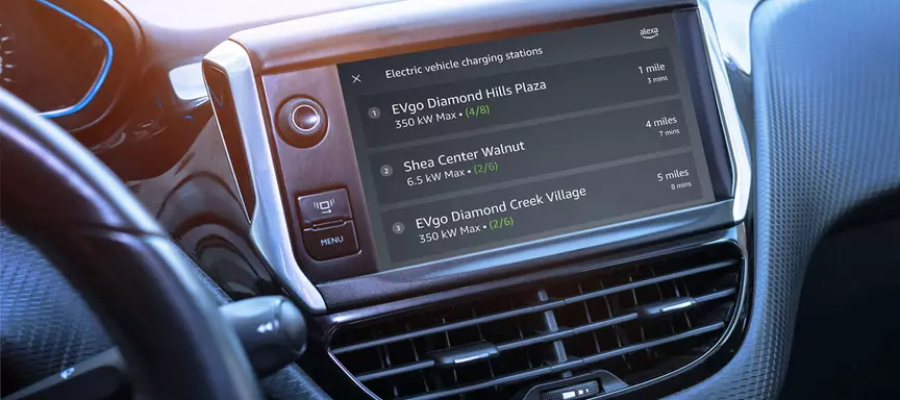EVgo Inc., one of the leaders in EV public fast-charging infrastructure in the US announced this week the first integration of an Alexa-enabled EV charging experience with Amazon and its PlugShare public EV charging location finder and mapping solution. Drivers with Alexa-enabled vehicles or accessories can now ask Alexa to help them find and navigate to nearby EV charging. Using the PlugShare API, the integration creates a seamless charging experience for Alexa-enabled EVs, including the Nissan ARIYA, Ford Mustang Mach-E and F150 Lightning.
This development is a step towards greater coordination between drivers/passengers, EVs and the growing deployment of EV charging infrastructure. Enabled with the correct technologies at the charger, the EV charging network operators can report real-time information on whether chargers are operational, available, and compatible, the power delivery/charging speed capabilities available and other features/facilities at the location.
The addition of voice control (in this case Alexa) is not just a driver convenience feature but is also a safer option than scrolling through menus and selecting options whilst driving. For EV drivers with disabilities, this could be a critical feature rather than a nice-to-have.
For deployments at locations with multiple EV charging stations – particularly dedicated charging hubs/forecourts – SAR believes greater granularity of data will be available in the future. This could include the number of vehicles queuing for charging, ETA of the charging event based on the current capacity and the relative cost of charging up a certain percentage of the vehicle’s battery at a public charging station, and then (for drivers that can) charging to a higher level at home.
Whilst the addition of voice control will likely be welcomed by EV drivers, the user experience of its intended function will depend heavily on the quality of data from the network and the inclusion of charging station locations in the PlugShare platform. For a seamless experience, the platform needs to include all available EV charging locations nationwide that are compatible with the vehicle, or a driver could be directed to locations that are not optimal for their journey. As volumes of EVs on the road and charging destinations grow, it will also be important to incorporate information from other road traffic and vehicles. The implication could potentially lead to vehicles being directed to the same location based on their predicted journey to avoid traffic jams and multiple vehicles being directed to an individual available EV charger that could arrive at a similar time. Standardisation of data available at the charger, the convergence of multiple location/mapping platforms and a high level of compute – possibly with the use of AI – for combined telematics will likely be needed.
SAR quantifies and forecasts public EV charging infrastructure rollout by more than 50 countries globally in its EV charging service. Its audio, voice and user interface technology teams also provide market analysis of in-car audio and voice technology.
The original article is here.



